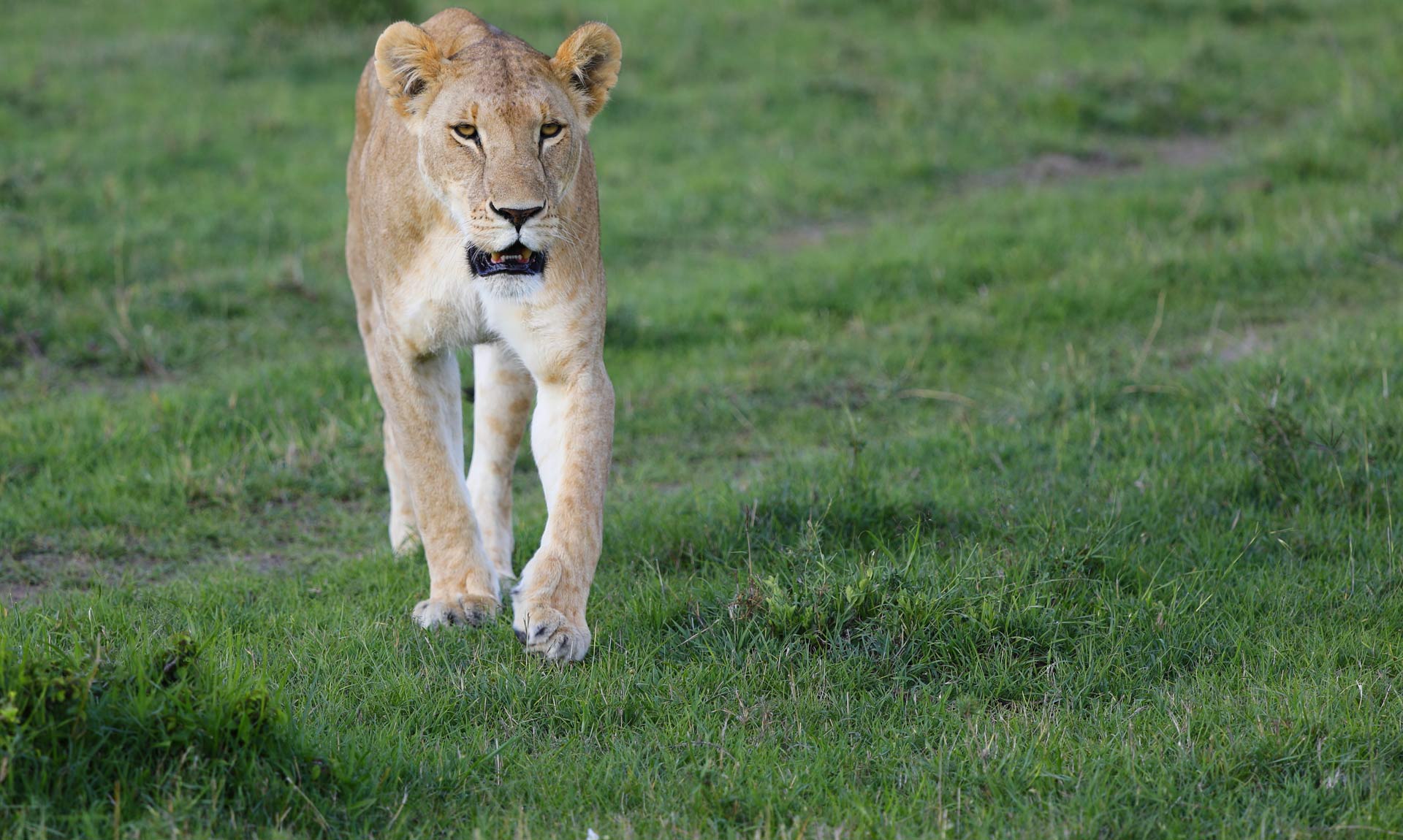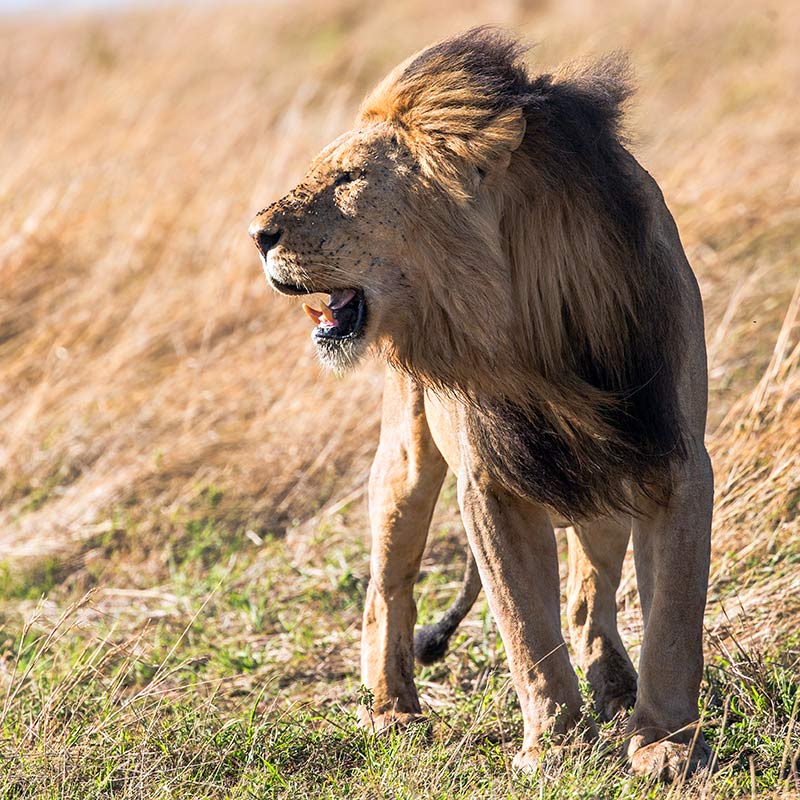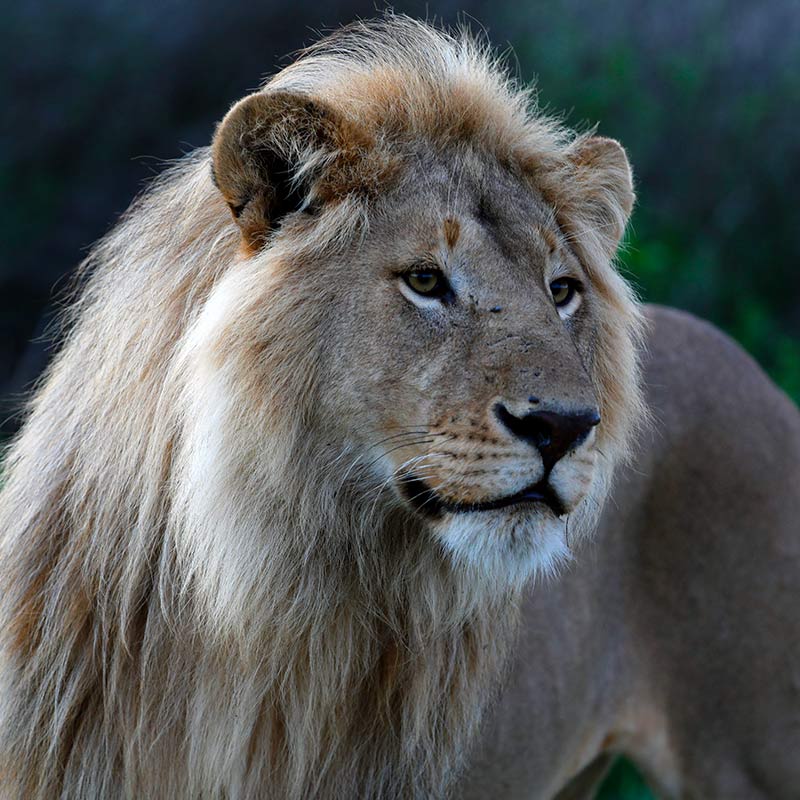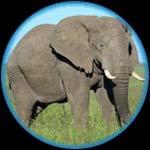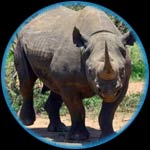LIONS LEFT

BETWEEN 23,000 – 39,000 REMAIN IN THE WILD
 50 YEARS AGO THERE WERE APPROXIMATELY 450,000 LIONS IN THE WILD
50 YEARS AGO THERE WERE APPROXIMATELY 450,000 LIONS IN THE WILD
 STRONGHOLDS: RUAHA NATIONAL PARK & SELOUS GAME RESERVE, BOTH LOCATED IN TANZANIA, AS WELL AS GIR FOREST NATIONAL PARK IN INDIA
STRONGHOLDS: RUAHA NATIONAL PARK & SELOUS GAME RESERVE, BOTH LOCATED IN TANZANIA, AS WELL AS GIR FOREST NATIONAL PARK IN INDIA
 THE LION IS CLASSIFIED AS VULNERABLE ON THE IUCN RED LIST
THE LION IS CLASSIFIED AS VULNERABLE ON THE IUCN RED LIST
LION FACTS
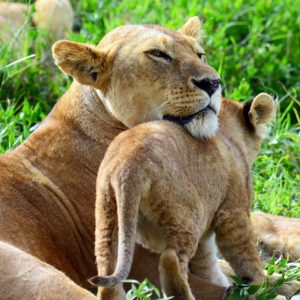 The Lion is one of the largest of all the big cats. Their coat is short and tan-colored, which is paler on their underside. Male Lions are larger than females and typically have a thick mane of hair encompassing their heads. The Lion’s mane is a unique feature in the cat family. Much like the signature feature of many animals, the mane’s purpose appears to be for attracting females. Charles Darwin theorized that their mane was also to protect the vulnerable area around their neck from attacks by other Lions. Known for its fearsome, courageous and majestic characteristics, the Lion has rightfully inspired its nickname of ‘King of the Beasts’.
The Lion is one of the largest of all the big cats. Their coat is short and tan-colored, which is paler on their underside. Male Lions are larger than females and typically have a thick mane of hair encompassing their heads. The Lion’s mane is a unique feature in the cat family. Much like the signature feature of many animals, the mane’s purpose appears to be for attracting females. Charles Darwin theorized that their mane was also to protect the vulnerable area around their neck from attacks by other Lions. Known for its fearsome, courageous and majestic characteristics, the Lion has rightfully inspired its nickname of ‘King of the Beasts’.
Female Lions perform most of the hunting, usually at night. They are a predatory carnivore, with their main diet being every type animal from rodents to giraffe. However, their main prey also includes, antelope zebra, and wildebeest, and African buffalo. They also chase other predators away from their kills to scavenge.
Uniquely to cats, Lions are a social species, with related females living together in prides. Males will form coalitions that compete with other coalitions for pride supremacy, often in fierce and sometimes fatal battles. Following these battles, victorious males will sometimes kill male cubs to destroy the former males bloodline and enforce their supremacy.
Female Lions typically breed at four years of age and males at five. Following a gestation period of approximately 110 days, 1 – 6 cubs are born. Lion cubs are dependent on females until about 6 months after birth. Females are defensive of their cubs. Related females are known to produce cubs at approximately the same time, which enables them to suckle each other’s cubs.
LION HABITATS
 Thick brush, scrub, and grassy areas appear to be perfect Lion habitats because they provide cover for hunting and dens. However, the Lion has a wide habitat range, from the savannah woodlands of East Africa to the Kalahari Desert. The Lion has also been recorded venturing as high as up to 14,000 feet in the Bale Mountains of Ethiopia. Asiatic Lions are found only in the Gir Forest National Park in India. The Gir Forest National Park is a wildlife sanctuary consisting of about 875 square miles. 10 percent of the world’s remaining population of African Lions can be found in the Serengeti and Ruaha National Park in Tanzania and East Africa, on 12,567 square miles of protected land.
Thick brush, scrub, and grassy areas appear to be perfect Lion habitats because they provide cover for hunting and dens. However, the Lion has a wide habitat range, from the savannah woodlands of East Africa to the Kalahari Desert. The Lion has also been recorded venturing as high as up to 14,000 feet in the Bale Mountains of Ethiopia. Asiatic Lions are found only in the Gir Forest National Park in India. The Gir Forest National Park is a wildlife sanctuary consisting of about 875 square miles. 10 percent of the world’s remaining population of African Lions can be found in the Serengeti and Ruaha National Park in Tanzania and East Africa, on 12,567 square miles of protected land.
LION THREATS
 In these countries, the hunting of Lions is regulated so that only dangerous animals can be killed. However, in addition to direct population loss from trophy hunting, it is argued that trophy hunting usually targets large males, leading to a smaller and less healthy Lion population. Also, when a dominant male is killed, it usually leads to other deaths when male Lions battle for pride supremacy. The victors then kill the pride’s cubs to eliminate competition.
In these countries, the hunting of Lions is regulated so that only dangerous animals can be killed. However, in addition to direct population loss from trophy hunting, it is argued that trophy hunting usually targets large males, leading to a smaller and less healthy Lion population. Also, when a dominant male is killed, it usually leads to other deaths when male Lions battle for pride supremacy. The victors then kill the pride’s cubs to eliminate competition.
With population estimates of approximately 360 individuals in 2005, the Asiatic Lion is much more threatened than the African Lion. Nevertheless, this figure actually represents an increase on figures a century ago when estimates of their population was between 12 and 100 remaining, due to hunting.
More recently, Due to loss of habitat and wild prey, they have become a serious problem with livestock owners. Due to their practice of scavenging, Lions are particularly vulnerable to poisoned carcasses deliberately placed to eliminate predators. The Lion is sometimes seen as vermin and shot on sight, even on protected land. Just 50 years ago, there were 450,000 Lions. This a decline of more than 95 percent.
Since antiquity, Lions have been hunted for sport. Unfortunately, trophy hunting still remains permissible in several countries in Africa. The hunting of Lions is regulated. However, trophy hunting usually targets large males, leading to a smaller and less healthy Lion population. It is estimated that only 5,000 males lions exist in the wild. When a dominant male is killed, other Lion deaths usually occur when new male Lions attempt a pride take over. The victors then kill the pride’s cubs to eliminate competition. As a result, it is estimated that approximately 10 lion deaths occur for every male Lion hunted.


